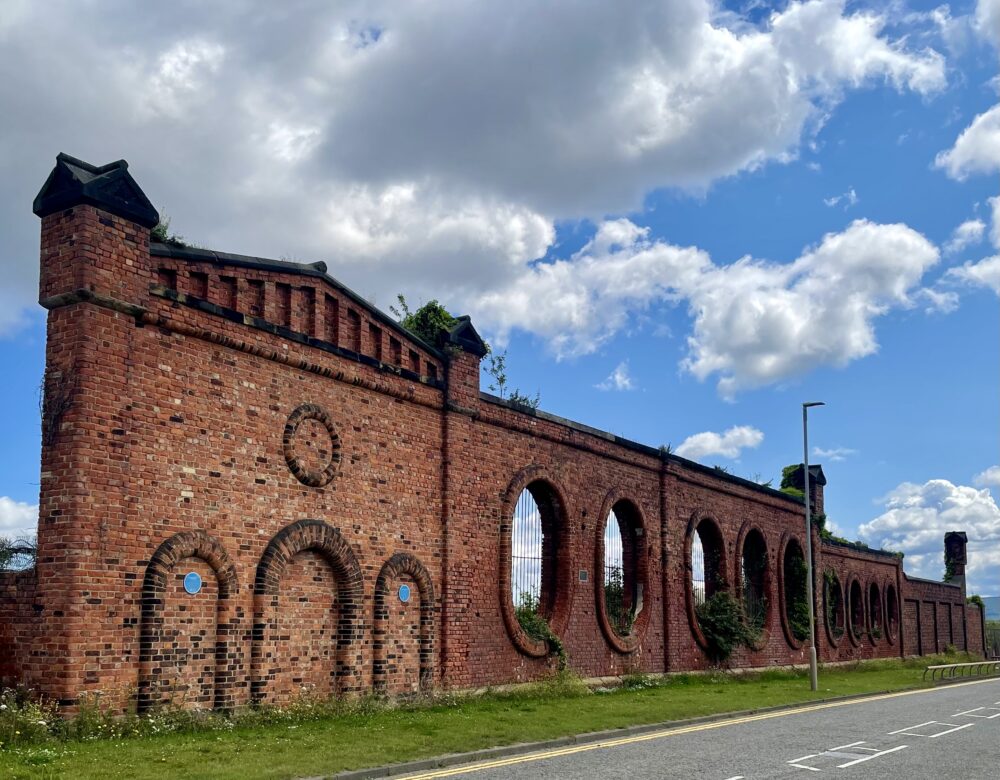Cleveland Salt Works
In the North East, we seem to like saving odd bits of old buildings: consider the Doxford Arch, for example, or the sign from the Crown Works site. In that spirit, allow me to present to you the last remaining wall of the Cleveland Salt Works:

But how did we end up with a salt works in Middlesbrough—hardly the most typical location?
In 1859, the Bolckow, Vaughan & Co Ironworks got fed up of dirty water from the Tees blocking up their boilers. They decided that a better solution would be to drill a borehole and extract clean water from underground. After a few years of boring, they unexpectedly discovered a huge bed of rock salt some 1200ft underground.
Rock salt, as it happens, is useful in all sorts of chemical processes being undertaken on nearby sites, so by 1887, the Cleveland Salt Company was founded to extract it, pumping water into wells and then using the heat of the ironworks to evaporate out the salt. Over the following six decades, hundreds of thousands of tons of salt were extracted through four different wells.
In fact, the salt mine ended up outlasting the ironworks: the ironworks collapsed in 1929, but the salt kept flowing until after the Second World War, with the works having been converted to run off their own coal supply rather than the waste heat of the ironworks.
Sometimes, I suppose one’s side-hustle outlasts one’s primary employment.
This post was filed under: Photos, Travel, Architecture, Middlesbrough.